The pictures at the left are full frames, reduced to 360x270 pixels and resharpened. They are included to show the location and relative size of the 1:1 samples, which are shown at the right.
The 360x270 samples are fragments of unmanipulated originals — just cropped and re-saved at a very low JPEG compression, so that they can be representative as to the "original" image quality.
When viewing 1:1 pixel-scale samples on a computer screen, one has to remember that the image detail is (on most monitors) shown larger than it will be printed. For 8x10" prints, my sample height will correspond to 1.02" (26 mm) on paper, while for 11x14" ones — to 1.41" (36 mm). In other words, even at these enlargements, your prints will look much sharper than in the 1:1 samples.
Sunny day
Here are my "standard" samples of the lake in front of my house in Crofton, MD, taken on a sunny August day, around noon.
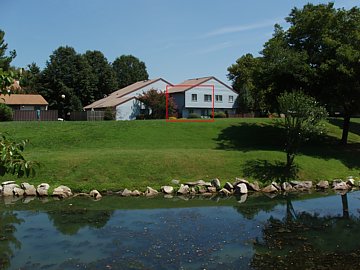
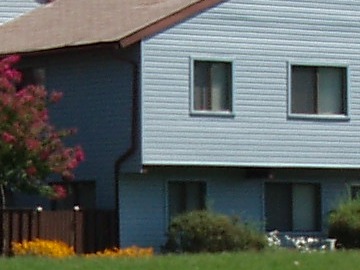
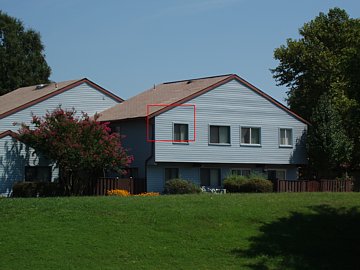
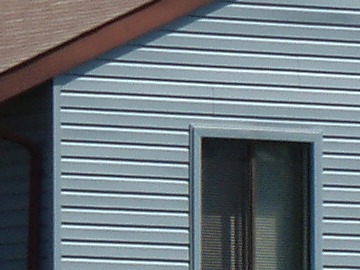
Full-size samples show some fuzziness at the widest zoom angle; I have learned to expect that from compact zoom lenses, and the sharpness is still acceptable for prints up to 9x12". Things get a little better at the tele end. A closer inspection of the full originals (see links above) shows some sharpening artifacts, surprisingly, in the grass. This supports my complaint about excessive sharpening in this camera. Color and exposure are right on the nose (I usually apply a -0.3EV compensation under sunny outdoors conditions).
Generally, however, I'm quite pleased: it is difficult to get better results from a camera this size (and at this price).
Outdoors, late afternoon
This is a picture shot by my wife at a local pumpkin patch in late October. Note that she was using a -0.7 EV exposure compensation to protect detail in the white socks (lady's, not mine!). If she had to go to the menu to do it, she would have given up, and then highlights would have been lost. Easy accessibility of exposure override is a very underestimated feature, and the results are most pleasing.
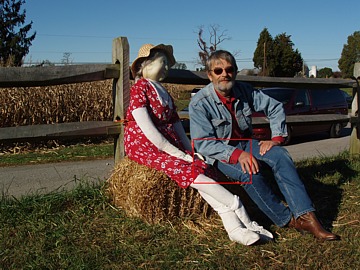
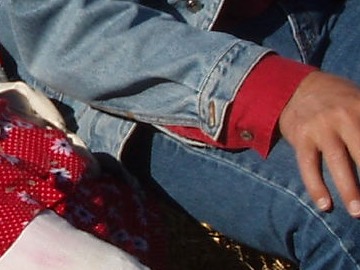
EFL = 40 mm (F = 8.3 mm); program with -0.7 EV compensation: 1/800 s at F/4.8, ISO 64. Sharpness and contrast at 0, SQ1 resolution (4 MP).
Note that this sample was shot (more exactly saved, after in-camera resizing) in the 4MP resolution, which we use routinely in the C-60, believing that 6MP is excessive for this camera (and lens) class.
Vacation snapshots
Two improvised pictures taken by my wife during a vacation in California. Once again, these are 4MP images.
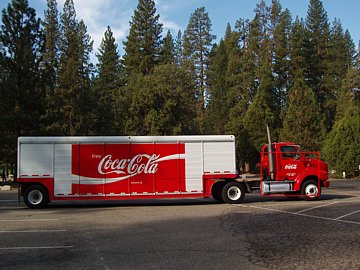

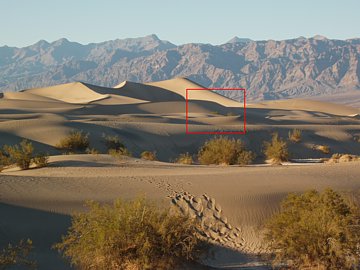
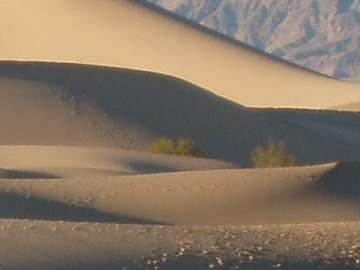
The Death Valley picture shows what is my main complaint about this camera: excessive sharpening, clearly visible as a bright halo along the top of the dark dune.
City by night
Again, let me use one of my wife's snapshots as an example. Here is a picture from the Las Vegas Strip, shot without a tripod. My wife smartly applied an exposure compensation of
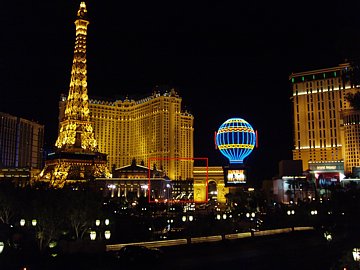
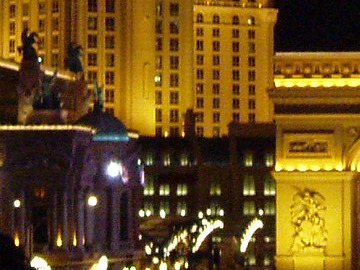
Not too shabby for a camera with a tiny CCD sensor: the noise at ISO 400, while visible, seems to be under control. Surprisingly, I've noticed no purple fringing or chromatic aberration around the burned-out lights, and I could bet there would be some.
You may ask why I have not used the noise reduction. Simple: it actually works only at exposures of
Indoors flash
Don't expect miracles using the built-in flash.
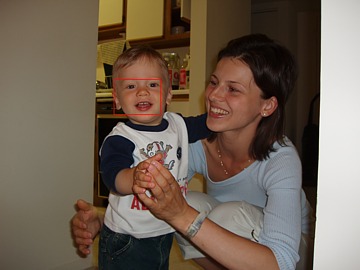

You can see a tad of flash light fall-off in the corners, but it is not really objectionable. The autofocus did not quite perform in this picture, but it is acceptable for smaller prints; skin color is good.
Macro mode, incandescent light
The following image illustrates the "super macro" (really: just macro) capability of the C-60. I took it with a mini-tripod, using a nightstand incandescent lamp.
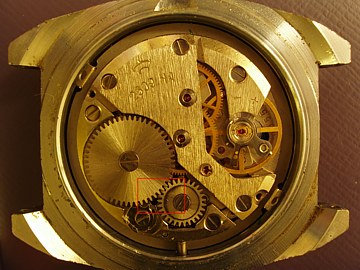
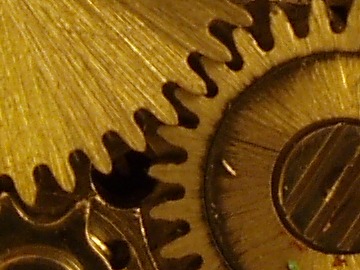
The tungsten (incandescent) white balance preset was unable to compensate for the redness of low-wattage bulb (auto WB did not do a better job either). The only way to get the white balance right would be by use of the reference WB, but the C-60 in missing this feature. Compare the same subject shot at the same conditions with the C-5050Z. Lesson: don't use low-power tungsten bulbs as the light source for this camera.
On the positive side, the image sharpness is surprisingly good, something I've learned to expect from Olympus cameras in the "super macro" mode. The field of view was about 42 mm, as tight as it is possible with this camera.
Conclusions
Don't expect from a pocket, clamshell model the performance of larger cameras in terms of lens sharpness and general image resolution. Within these limitations, however, the C-60 seems to perform more than respectably, delivering pictures with very good tonality and color, and with acceptable sharpness — better than most of the competition.
Back to the C-60Z review.